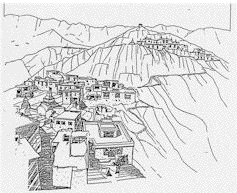|
 drawing by Solomon Benjamin drawing by Solomon Benjamin
Type as a Social Agreement.
Seoul, Korea: Third Asian Congress of Architects, Nov. 1988.
_________________________________________________
The paper points out that house types always have been shared knowledge between inhabitants and those who built: the skilled tradesmen and master builders. This allowed inhabitants to judge the work of professionals and express their preferences within the typological system. It argues the efficiency of this shared knowing and points out that, through generations of elaboration and cultivation a type could lead to a very high level of environmental quality. Witness, for instance, the Dutch canal house or the Georgian terraced house. Type, understood that way is a 'whole' that does not lend itself to adequate description. It lives not by words but by the action of those who inhabit and build.
In my later book "The Structure of the Ordinary" the concept is put in a larger theoretical context: in Part Three; “The Order of Understanding" type, with systems, and patterns, are given as examples of 'forms of understanding'. A relation to the role of the architect is implied in “Forms of Understanding, Thematic Knowledge and the Modernist Legacy" in: "The Education of the Architect" Martha Pollak, editor, MIT press,1997. Before this paper was written, type as a social construct was also dealt with in 'The Appearance of the Form" ( essay one: Sharing).
; to bibliography overview...to short list....to' Theory'....to Korean list.....to comprehensive list
|